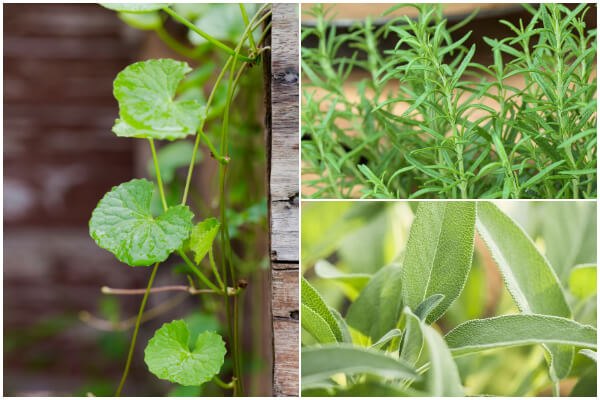Do you dream of cultivating a lush and vibrant herb garden but feel limited by your dry climate or sandy soil conditions? You’re not alone. Many gardeners face the challenge of nurturing plants in environments where water is scarce and soil struggles to retain moisture. But don’t let these hurdles deter you! A thriving, aromatic, and useful herb garden is entirely possible, even in the driest regions.
The secret lies in selecting drought-tolerant herbs specifically adapted to withstand arid conditions. These hardy plants are not only beautiful but also functional, offering culinary flavors, medicinal benefits, and even pollinator-friendly blooms. With minimal care and a bit of thoughtful planning, these herbs can transform your outdoor space into a flourishing, low-maintenance haven. In this guide, we’ll explore 12 of the best herbs that are perfect for dry soil gardening, ensuring you can create a resilient and rewarding garden regardless of your climate.
1. Rosemary

A Mediterranean staple, rosemary is renowned for its drought resistance and aromatic leaves. Perfect for culinary dishes like roasted vegetables and meats, this herb thrives in well-drained soil under full sunlight. With minimal watering, rosemary can also double as a fragrant garden border or even a small hedge.
Pro Tip: Once established, water rosemary sparingly to prevent root rot.
2. Thyme
Thyme is one of the most versatile and hardy herbs, thriving in rocky or sandy soils. It’s a great choice for drought-tolerant landscaping, especially as a ground cover or edging plant. This herb’s earthy flavor makes it a kitchen favorite, complementing soups, stews, and roasted dishes.
Did You Know? Thyme requires only a few trims per year to maintain its compact shape and bushy growth.
3. Lavender
Known for its calming scent and striking purple blooms, lavender is a champion in dry climates. This perennial herb not only adds color to your garden but also attracts pollinators like bees and butterflies. Whether used in essential oils, potpourri, or culinary dishes, lavender is a must-have for any low-water garden.
Planting Tip: Ensure lavender is placed in a sunny spot with soil that drains well.
4. Oregano
A culinary and medicinal favorite, oregano thrives in arid climates. Its bold, peppery leaves are key ingredients in Italian and Mediterranean dishes. Hardy in both hot summers and dry conditions, oregano adds flavor and resilience to your garden.
Gardening Note: Plant oregano near other Mediterranean herbs like thyme and rosemary for a cohesive, drought-friendly garden.
5. Sage
Sage stands out for its velvety, silvery-green leaves and earthy aroma. A popular choice for drought-resistant herb gardens, sage thrives in sandy or loamy soils. It’s not only a culinary delight but also a favorite in ornamental gardens for its aesthetic appeal.
Watering Tip: Sage prefers deep but infrequent watering once established.
6. Marjoram

7. Bay Laurel
Bay laurel is a hardy shrub known for its aromatic leaves, often used in soups, stews, and sauces. Ideal for drought-prone climates, this slow-growing plant requires minimal care once established.
Gardening Advice: Plant bay laurel in a sunny spot and prune regularly to maintain its size.
8. Tarragon
Tarragon loves well-drained soil and requires little water once established. Its subtle anise flavor enhances dishes like salads and seafood. With its feathery green leaves, tarragon also adds a soft texture to your herb garden.
Quick Tip: Harvest tarragon leaves regularly to encourage fresh growth.
9. Lemon Balm
Although lemon balm prefers moist conditions initially, it becomes surprisingly drought-tolerant once mature. This fragrant herb is great for tea, desserts, and even soothing insect bites.
Placement Advice: Grow lemon balm in a partially shaded area for best results.
10. Fennel

11. Parsley
While parsley is less drought-tolerant than some herbs on this list, its adaptability makes it a solid choice for low-water gardens. With occasional deep watering, parsley thrives in well-drained soil and provides a fresh garnish for countless recipes.
Fun Fact: Parsley grows equally well in containers, making it perfect for small gardens.
12. Chamomile
Chamomile is not only a drought-resistant herb but also a soothing remedy for tea lovers. Its daisy-like flowers add charm to any garden and thrive in arid conditions once established.
Gardening Tip: Trim back chamomile regularly to promote continuous blooming.
Tips for Growing Drought-Tolerant Herbs
- Choose the Right Soil: Use a mix of sandy soil and compost to improve drainage.
- Water Wisely: Deep, infrequent watering encourages strong, deep roots.
- Mulch for Retention: Mulch around plants to reduce evaporation and maintain moisture.
- Group Herbs by Needs: Plant herbs with similar water and sunlight requirements together.
By selecting these drought-tolerant herbs, you can create a resilient garden that flourishes in dry soil conditions while offering a rich array of culinary and ornamental benefits. Start planting today and enjoy the beauty of a thriving herb garden, even in the harshest climates.


















Leave A Comment